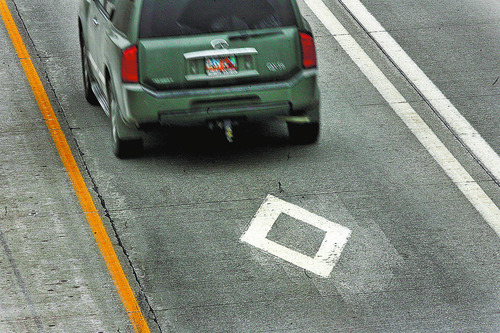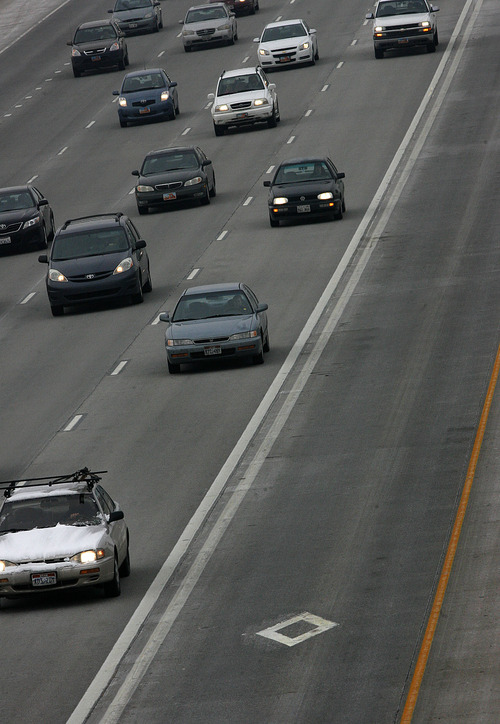This is an archived article that was published on sltrib.com in 2013, and information in the article may be outdated. It is provided only for personal research purposes and may not be reprinted.
A program that allows Utah solo drivers to buy their way into express lanes on Interstate 15 is falling short of revenue needed to pay costs of the system. So highway officials say they are considering charging participants a small monthly fee to make up the deficit.
Currently, the electronic toll express-lane program costs about $71,000 a month to operate through a Utah Department of Transportation contract — about $15,600 more than it generates in revenue.
Ahmad Jaber, a state highway operations engineer, told the Utah Transportation Commission on Thursday that one step UDOT is considering to help erase that deficit is to pass on to tollpayers a $2.85 per-month fee that contractors charge it for each account every month.
UDOT has opened 11,235 toll accounts since the program was launched in 2010, allowing participants to use express lanes without the two or more vehicle occupants required of others. But the agency found that 645 accounts had not charged any tolls in the past 18 months. Those inactive accounts end up costing the state, without generating revenue.
Users now pay an initial $8.75 fee to obtain a transponder, along with a minimum deposit of $25 into their individual Express Pass Account. After that, charges only are made for actual use of the express lanes based on distance and traffic.
The current 62 miles of express lanes are divided into six payment zones, with charges in each varying from 25 cents to $1 based on congestion levels.
UDOT spokesman Nile Easton said the agency is stressing that the idea of passing along the monthly account fee "came up just as a concept, not an official recommendation."
Because of that, he said it is not yet clear whether the monthly fee would be passed on to all users or those with inactive accounts. The Transportation Commission would need to approve any fee before UDOT could impose it.
Meanwhile, express lane violations are down, Jaber told commissioners.
UDOT studies now show that 12 percent of vehicles in express lanes are there illegally, down from 17 percent last year.
That higher rate last year especially worried UDOT because the federal government expects states to keep violation rates between 8 and 15 percent — and may impose sanctions if rates remain high and states do not make significant efforts to reduce them.
Jaber said UDOT paid the Utah Highway Patrol $12,000 every few months to conduct blitzes to enforce express lane rules — which likely led to the decrease. Only carpoolers (with at least two riders), buses, motorcycles, C-decal (clean-fuel) vehicles and single riders who pay a toll through an electronic transponder are allowed in express lanes.
Jaber said the Highway Patrol just finished a blitz in Salt Lake County this week. "They stopped 215 vehicles. Out of those, they ticketed 116 [the rest received warnings]. Thirty of those [ticketed] were people crossing the double white line" illegally, Jaber said.
UDOT also reported that the $86 million that had previously been budgeted to stretch express lanes all the way from the Salt Lake County line to Interstate 84 in Weber County is not enough to expand them that far. They say it likely will expand them only to Farmington — and do that only if the commission and federal government approve some exceptions to normal rules.
Kris Peterson, director of UDOT's Region One, said such exceptions would include having only an 11-foot-wide express lane (instead of 12 feet) and a 4-foot shoulder. UDOT officials said a similar exception was previously allowed for express lanes between Lehi and the Point of the Mountain.
Peterson said that would allow painted lane lines to match pavement joint lines in areas with concrete to reduce confusion. He said UDOT plans to complete environmental work on plans this year and hopes to begin construction next year.
Peterson said adding express lanes will force replacement of some bridge decks — which will close I-15 on some weekends and divert traffic to the Legacy Parkway.





